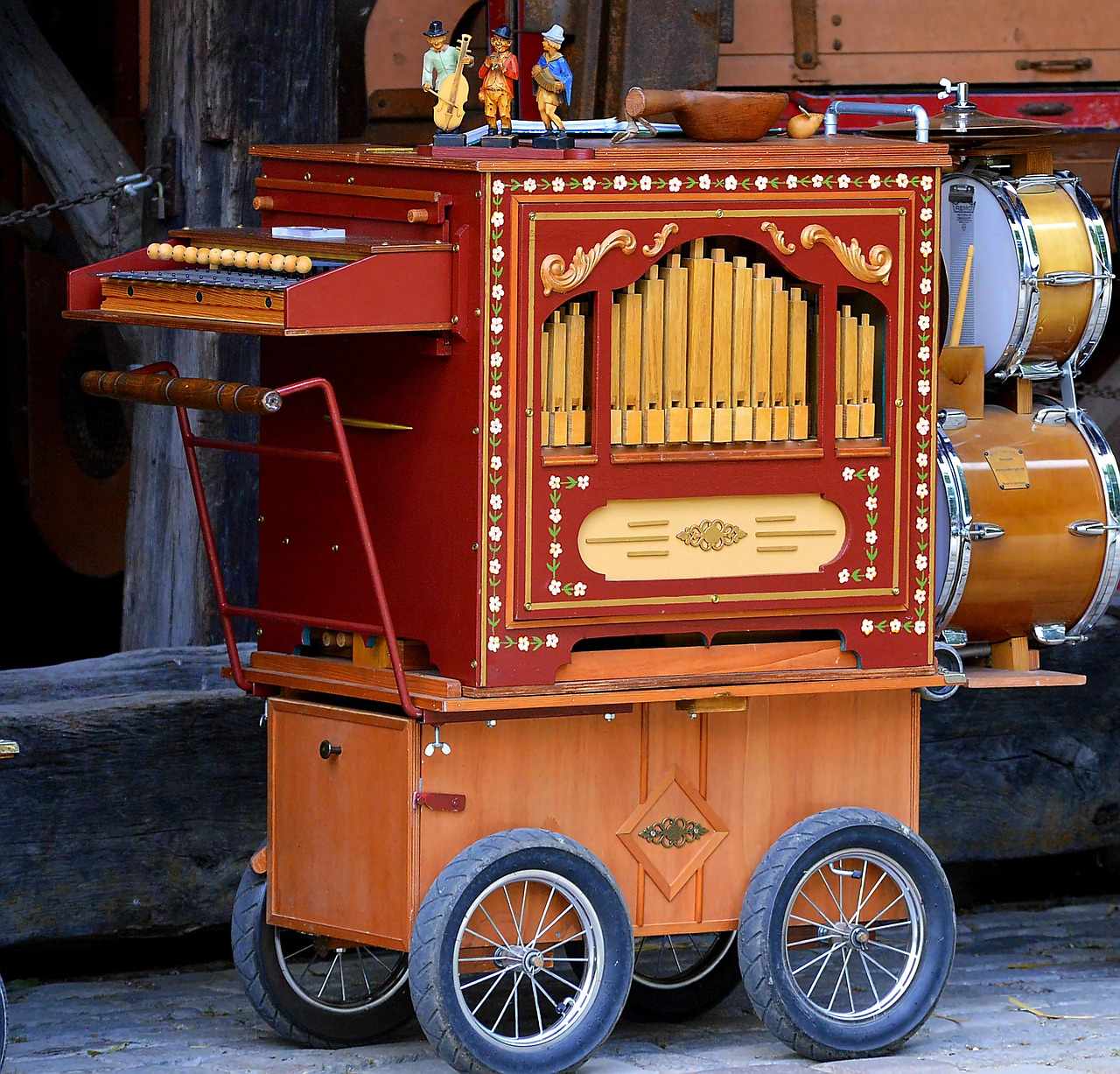Barrel organ: The musical instrument that left an era
Barrel organ is a musical instrument that produces music on a rotating cylinder of studs, each of which gives a note. It takes about 800 hours to be made and 7,000 nails for the 9 songs it plays.
When did it first appear?
The story of the barrel organ is lost in time. The first barrel organ is rumored to have been made in 1808 by a piano maker in Bristol, in England, who removed the keys and replaced them with a cylinder of nails. It was released in Belgium, France, Northern Italy and the Eastern States of America. An explosive spread followed in the Greek regions of Europe and East, especially in Constantinople, Athens, Piraeus, Thessaloniki, Cairo, Alexandria, Smyrna, Bucharest, etc., with Greek artisans and several Armenians, who wrote greek and european music.
When was the first Greek lantern made?
The first greek barrel organ ("λατένα" in greek) was made around 1880, following the collaboration of the Greek Iosif Armau and the Italian Jugepe Turconi. The two were very good friends with keen musical and construction skills. Taking advantage of the fact that Turconi was involved in the construction part, while Armaou was in the recording (i.e. "stopping" the songs), they had created a partnership and split the work into two parts. The barrel organ was shaped like a large box, which could be carried on the back and was usually large enough to hold nine songs.
All the major centers, as well as the wealthy houses of Polis and Asia Minor, had their own barrel organs. No wedding, dance or other celebration took place without a barrel organ. It is characteristic that at the beginning of the 20th century there were around 5,000 barrel organs in Constantinople, Athens and Piraeus, an impressive number, in relation to the population at the time.
The barrel organ was in a time when there was no gramophone, radio, stereo, television, literally nothing. The people were entertained with the laterna, they danced, they sang...Smirnaean, folk, rebetika, cantadoric, national songs, even polkas, mazurkas, waltzes and tangos were written on the latern . It is no exaggeration to say that a serious part of our musical heritage is influenced by the sounds and technical capabilities of this instrument. There were two groups of specialties: the first, the "Organ Makers", who built the instrument, and the second - the "Stampadori" or "nailers" who placed the nails like notes.
Finally, there were shops that exclusively sold ornaments and other items for it. Some examples were leather covers in various colors, velvet covers with relly, gold embroidery with shows, beads, rosaries and pictures.
The age of decline
The close contact of the laterna with rebetiko and her entry into refuges begin to bring her into conflict with the establishment and marginalize it. The dictatorship of Metaxas forbids the rebetiko and"outlaws" the laterna. The instruments are collected from the road, and withdrawn to the warehouses. The solution for Laterna, had be given by the cinema, which had supported it in the past, this time through the hands of Philopoimenos Fino. He shoots two films in which Laterna plays the leading role: "Laterna, poverty and philotimo" in 1955 and "Laterna, poverty and carnation" in 1957, written and directed by Alekos Sakelarios with the actors Avlonitis, Fotopoulos and actresses Karezi, Alexandraki. The wonderful music of Manos Hatzidakis, which played by Nikos Armaos excites the world. The lantern becomes fashionable. Those who can pay get an instrument at home. Almost all great composers such as Theodorakis, Xarchakos, Markopoulos, Plessas use her sound to dress up their songs.
How many barrel organs are there today?
The glory days are gone. Today in the region of Attica there are less than 10 wandering barrel organs and there may be as many more in the rest of Greece and Cyprus. The barrel organs are now collector's items, since together with the instruments, the craftsmen of the lantern were lost. Some now adorn private collections in Europe and America.

 English
English
 Ελληνικά
Ελληνικά Русский
Русский
 Posted by
Konstantinos Karatzidis
Posted by
Konstantinos Karatzidis






